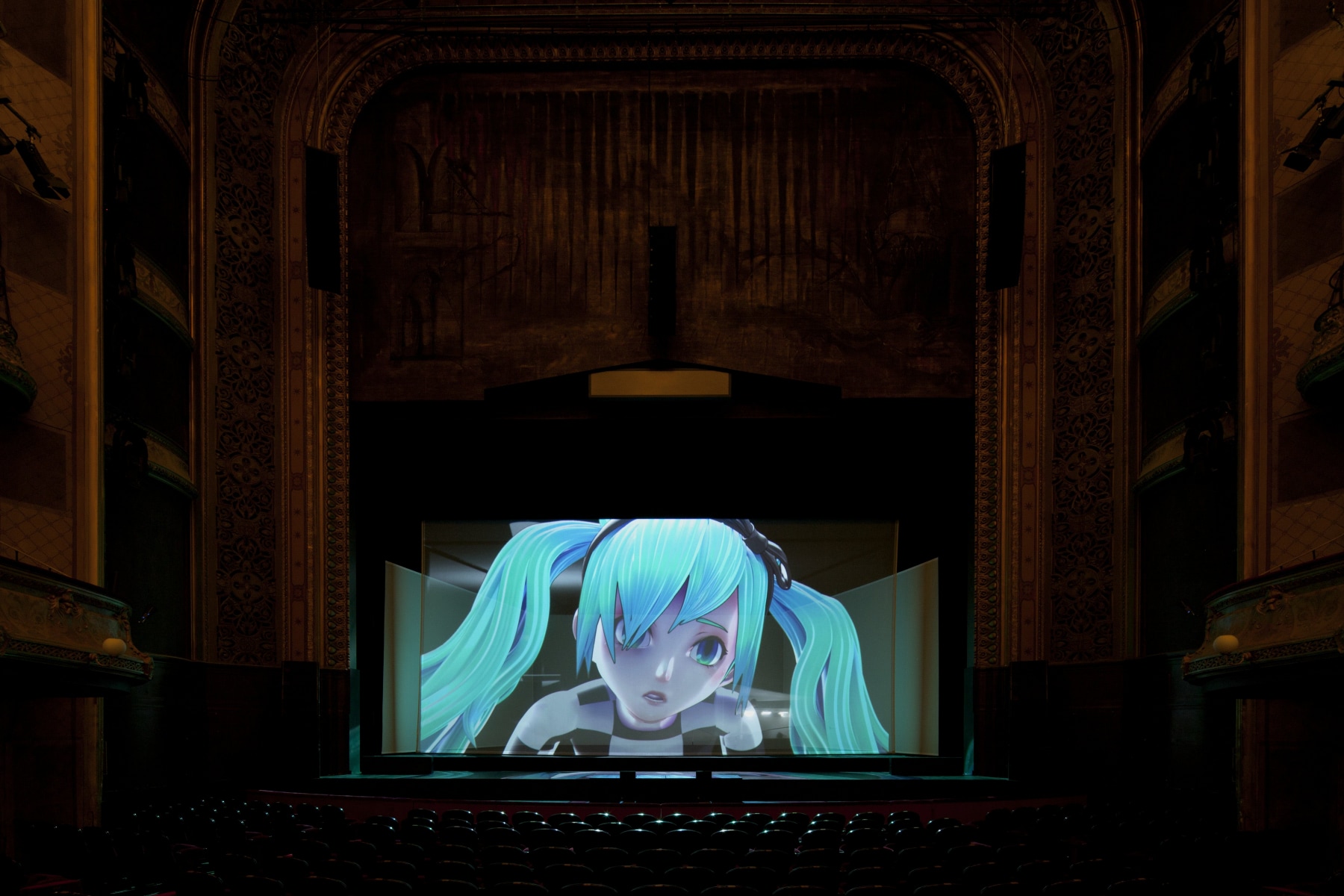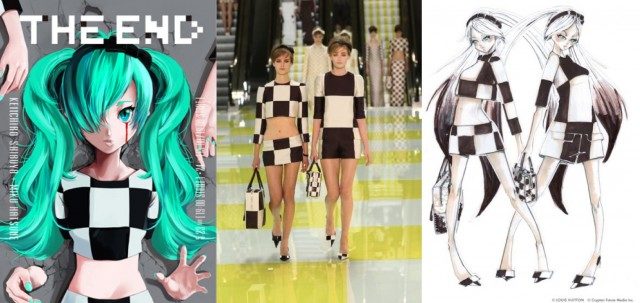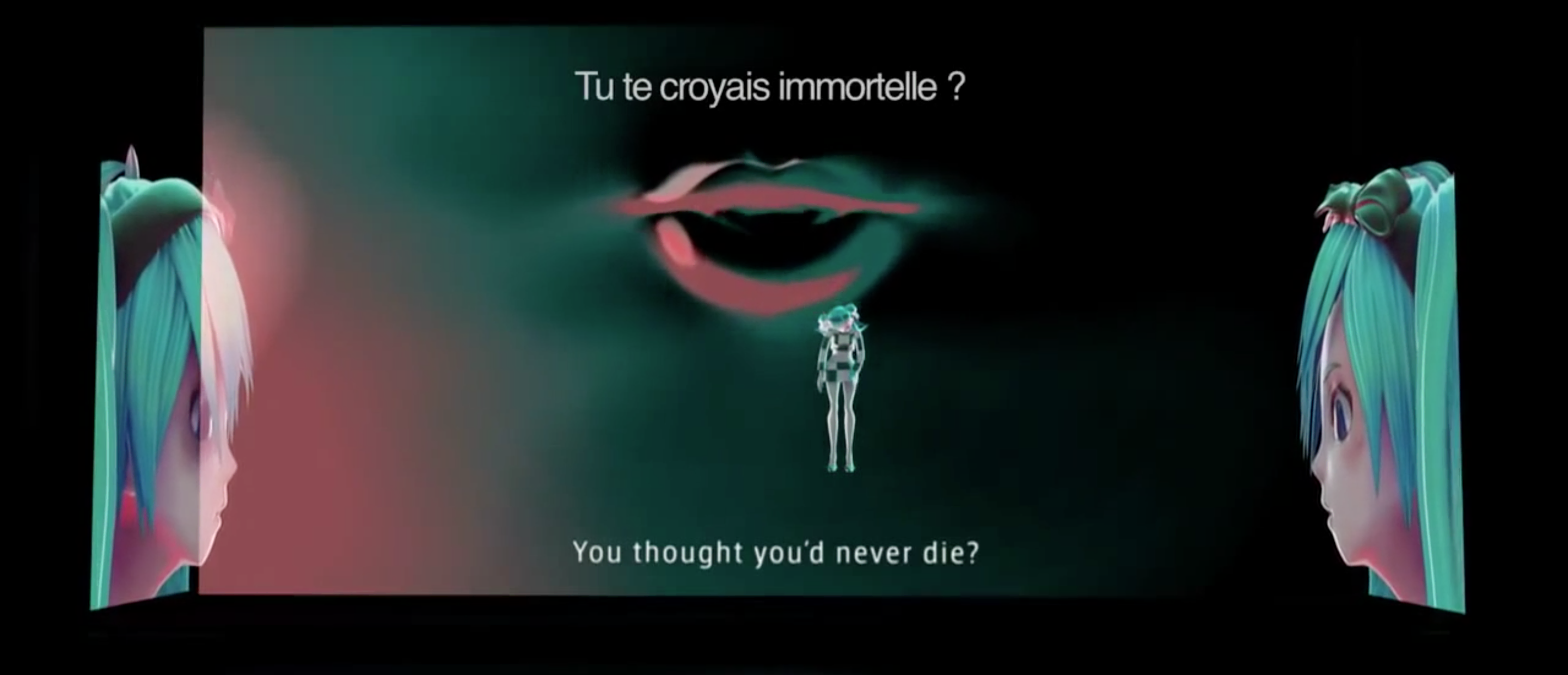Sixteen-year-old Japanese singer Hatsune Miku grew in short time to a worldwide popstar. With her colourful appearance she counts millions of followers on social media, she collaborated with Pharrell Williams, opened Lady Gaga's concerts and even appeared in car commercials. She was in the Netherlands last summer to perform in her very own opera The End. More precisely: the hard-disk containing her was.
Because she is not made of flesh and bones, she is an entirely digital hologram with a computer-generated voice. Nevertheless, the huge concerts of Miku that take place in the biggest stadiums of Japan are often sold out in the blink of an eye. Hundreds of thousands of ecstatic fans love her dance moves, her dress designed by Louis Vuitton, her characteristic blue hair and, above all, the sound of her voice.
Last June during the Holland Festival in Amsterdam, digital vamp Hatsune performed in opera The End, directed by composer Keiichiro Shibuya. Her computer voice allows her to do things a 'normal human' is not capable of. "As she is digital, her tempo can be adjusted to an extreme amount of beats per minute. The same goes for her dancing. For Miku, it's just a matter of turning a knob" says Matijs de Jong, board member of the Dutch J-Pop foundation in an AD article. "But when the electricity goes down, she's dead".Exactly that, death, is what the opera is about. It takes place in a space formed by four translucent screens with projections that overlap each other and a sometimes visible coffin-shaped cabin for the composer - the only human on stage. The story starts off by Hatsune and her digital furry friend who emerge in space, accompanied by a robotic voice saying "The light shines down on an object, and it comes into existence. Everything is like that, especially us". Then Miku meets a stranger, that seems to be a ghost-like version of herself who tells her she will die as well, as all humans do: this is the starting point of the search for an answer. What does the existence of Hatsune Miku mean? This question, combined with the slightly unnatural vocals and repetitive electronic music in the context of a traditional opera building, creates a very touching experience.



Share your thoughts and join the technology debate!
Be the first to comment